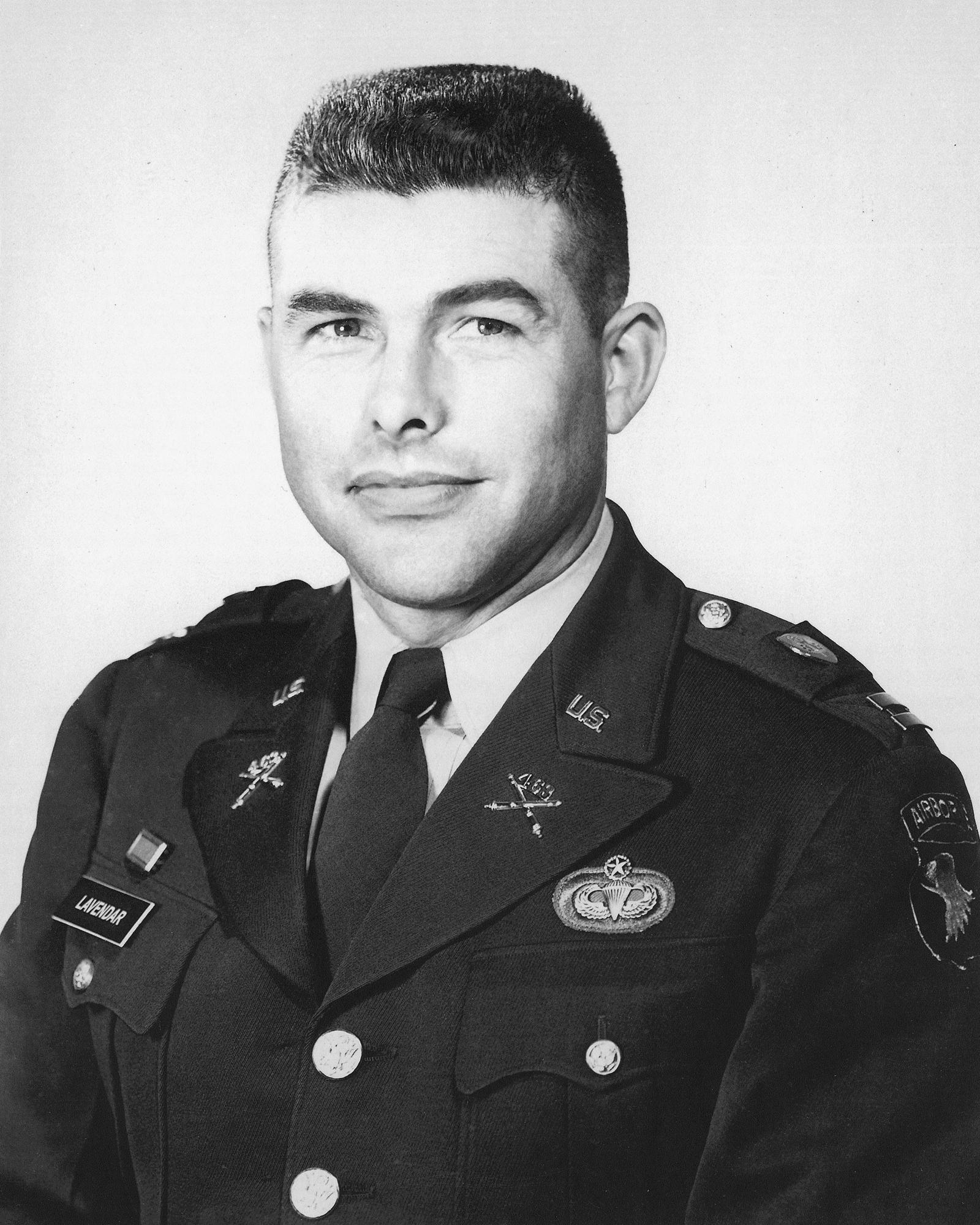|
Following distinguished combat service in World War II in the 82nd Airborne
Division, Lt. Col. Paul W. Lavendar had his introduction to Army test and evaluation with
the experimental “Pentomic Division” organization from 1956-1960. He
single-handedly developed methodology and the guiding procedures for mortar and
artillery fire support to that revolutionary tactical concept.
From 1963 to 1965, Lavendar became involved with the test and evaluation of the new airmobile
concept and tactics of the 11th Air Assault Division at Fort Benning, Georgia. By sheer ingenuity, innovativeness, and initiative, Lavendar developed
detailed, comprehensive exercise scenarios that included appropriate unit
actions in sufficient numbers to obtain representative scientific findings that
subsequently resulted in activation of the 1st Air Cavalry Division.
Lavendar was then
reassigned (1965-1966) to the U.S. Army Infantry Board at Fort Benning, Georgia,
where he served as an Assistant Operations Officer, Test Officer, and Chief of
the Small Arms Test Division. At this assignment, he participated in the service
tests of the Small Arms Weapon Systems (SAWS), a program to develop a family of
small arms that would utilize common components and ammunition. This program
produced the M-16 rifle which first saw action in Vietnam.
His final active military
operational test and evaluation assignment was from 1967-1970 with the Combat
Developments Command Infantry Agency at Fort Benning, Georgia, where he served
as the Study Team Chief, and later as the Chief, Evaluation Branch. His major
area of responsibility was the Surveillance, Target Acquisition, and Night
Operations (STANO) development program. He conducted troop tests with the 82d
Airborne Division, and service tests with the Tropic Test Center, Panama, and
Combat Evaluation Combat Divisions in Vietnam.
Following his military
retirement in 1970, Lavendar worked for the U.S. Army Infantry Board, Fort
Benning, Georgia, until his retirement from civil service in 1990. Of great
significance is the fact that he developed 44 test operations procedures, which
facilitated and standardized the methodology for use by the Infantry Board test
officers during test plan development for the testing of research and
development prototype models and of production items/systems developed by the
Army.
During his
final years in Civil Service (1981-1990), Lavendar served as the technical
advisor to five presidents of the U.S. Army Infantry Board and chief coordinator
for all phases of the USAIB test mission. He was the cornerstone of the U.S.
Army Infantry Board's integration and successful operation within the test and
evaluation community and served daily in true tradition to the Infantry Board's
motto - "Only the best for the finest." |

